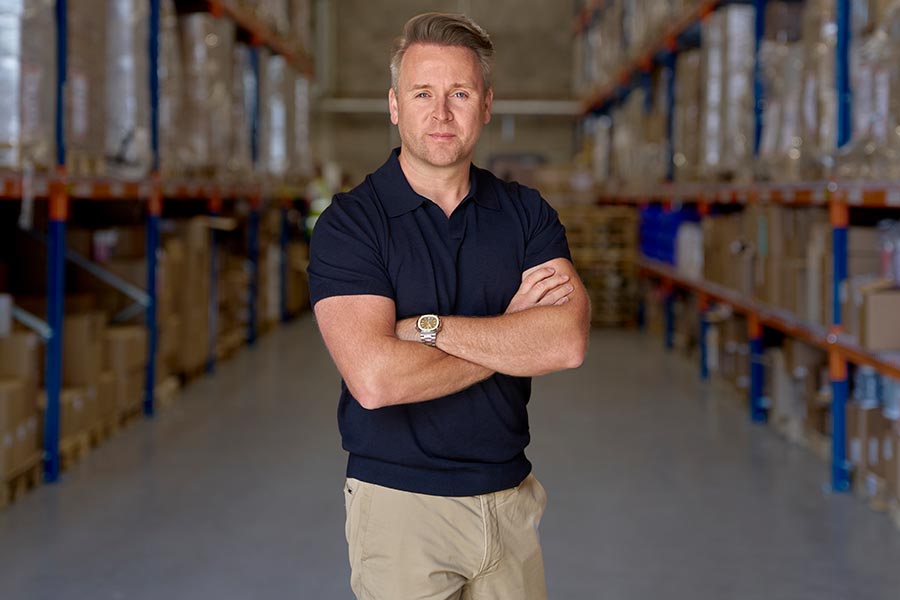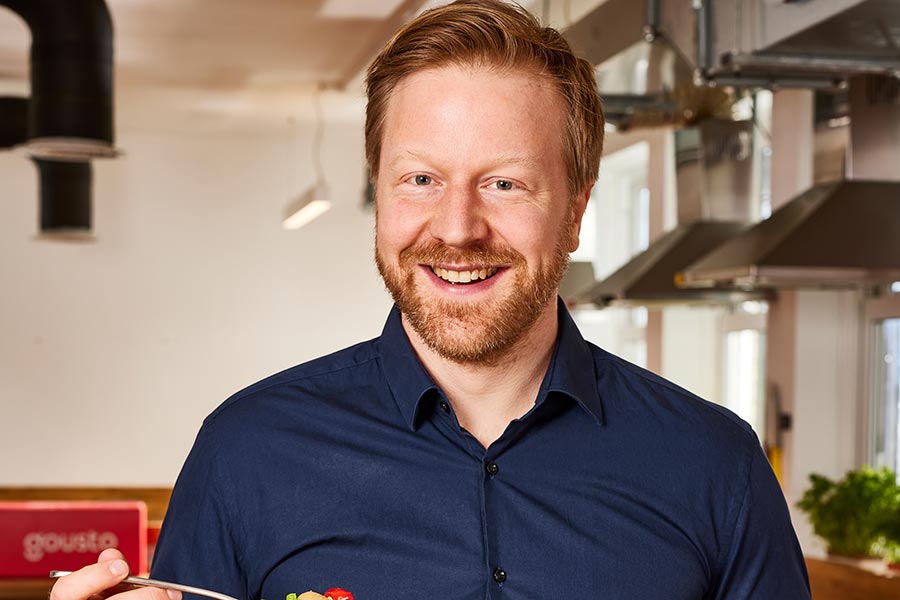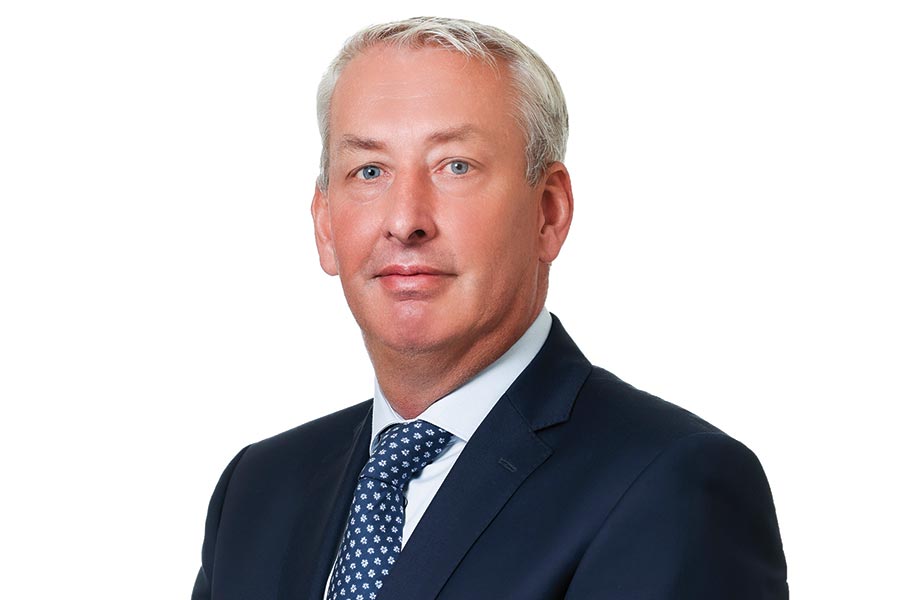Dublin Port’s chief executive Barry O’Connell talks to Ben Haugh about the challenges of managing one of Ireland’s most critical pieces of infrastructure
From the high vantage point of Barry O’Connell’s corner office overlooking the Alexandra Basin, the hustle and bustle of Dublin Port can be observed in detail. Trucks slowly snake around the industrial maze, workmen in hi-vis jackets hurry to and fro while cranes lift containers from giant ships.
“There are 10-12,000 truck movements here a day, so the whole thing just operates as a well-oiled machine,” Dublin Port’s chief executive tells Business Plus magazine while gazing out the window on a dull winter afternoon.
From this angle, it is possible to spot some issues before they happen. But others cannot be anticipated. Our interview was supposed to take place yesterday, but O’Connell got summoned to an emergency meeting with James Lawless, then junior transport minister, about the closure of Holyhead after it was damaged by Storm Darragh.
“I’m used to it,” O’Connell says. “I’ve experienced various different crisis situations in the past. [Holyhead’s closure] hasn’t been really stressful because it hasn’t impacted hugely on the port.
“What we’re more sensitive to is the impact it has on the economy and on passengers. Obviously the incident happened in Holyhead, not here. So our role has been to say: ‘Listen, how can we help to alleviate this?’ Under the leadership of minister Lawless, who’s doing a great job in coordinating everybody, it’s been a really constructive exercise.”
Holyhead partially reopened on January 16 after being closed for over a month. When asked if he shares the relief of some business leaders such as Ryanair boss Michael O’Leary that Sinn Féin will not lead the next government, O’Connell says: “We’re apolitical. We serve the country, and that means we have to interact constructively with whoever is in power. So we’ve had meetings with Sinn Féin here to explain what happens. And we’ve had meetings with all parties, and we’ve continued to adopt that approach.”
O’Connell’s position as head of a public body requires him to be more measured than someone like O’Leary. Even so, he exudes a stately presence that suggests he would be diplomatic in his comments regardless of employer.
When asked about a suggestion by Eamon Ryan, the former transport minister, that Dublin Port lands used to store imported cars could be reclaimed for housing, O’Connell focuses on the engineering reasons why it would not be a good idea rather than criticising the ex-Green Party leader personally.
Would he ever consider a move into politics, I ask? He pauses. Perhaps the directly elected mayor of Dublin position would appeal, even though he is a proud Corkman? “No…well, I don’t know. I haven’t thought about it,” he says with a smile.
O’Connell took over the top job at Dublin Port two years ago, following three decades at Coca-Cola’s bottling operation. He was chief executive of Coca-Cola Malaysia, Singapore and Brunei, based in Kuala Lumpur.
Before that he was managing director in Australia, New Zealand and Fiji. He also held senior positions in Austria, Slovenia and Switzerland. “My career has been about change. I’ve lived and worked in eight different countries, and therefore I’ve changed eight times,” he says.
“I tended to be brought into bottling operations which were in trouble. So I usually came in to get them back on track. And [they] were large operations which [involved] manufacturing, distribution, sales, marketing, the full ambit.”
O’Connell says his move to Dublin Port has been exciting, but it has also been challenging. “It was interesting from day one. The first thing you feel when you come into the port is a sense of pride from everybody you work with.
“You then begin to appreciate the diversity of the operation. So you have your land development, a big infrastructure development and project management functions. Plus you begin to see the activity and the impact it has on the economy. It’s very easy to fall in love with the place very quickly.
As O’Connell talks, he points out the window at various operations. He looks north at the recently opened greenway which runs along Dublin Port’s perimeter. This was designed to bring people into the port, he says. I reply that there has been talk of this for the best part of a decade, but it hasn’t really happened yet.
“No, and now it will,” O’Connell says. ”When you go to the greenway, you’ll see what I’m talking about. And that’s only the start. I think that’s 2.2 kilometres of what will eventually be 16 kilometres, right around the periphery and through the port itself.
“[It’s] getting 5,000 visitors a week at the moment. So that’s a quarter of a million, roughly speaking, over the course of a year. And that will grow.
“The Great South Wall is also tracking on 300,000 visitors, which technically is not part of the port but is in terms of being a destination.
“Here [at] the Odlums building,” he says, pointing to the concrete grain silo on Alexandra Road, “we are working with the Arts Council to develop that into a centre for 52 artist studios.”
O’Connell says that if the plan receives government support, it could be open within 18 months. “A business plan has been submitted. It [was in] the manifestos for Fine Gael and Fianna Fáil in the election. We hope they will make a positive decision and then we can get going.”
O’Connell, who lives in Rathmines with his family, is a keen cyclist and enjoys trips around the country. “When I cycle to work, I get an e-bike. But on weekends, I use a road bike. This year we’ll do the Ring of Beara, Ring of Dingle and Ring of Kerry, and maybe the Burren.”
Based on his 7km route to work, does O’Connell believe Dublin is a safe city for cyclists? “In the main, I think it is,” he says. “But there are points, in particular the Tom Clarke Bridge there,” he gestures out the window to his left, “where I wouldn’t feel particularly safe, which is why I try and avoid it.”
Last year Dublin Port lodged a planning application for a new bridge across the Liffey to the east of the Tom Clarke Bridge which would take its lorries off public roads. The Spar (Southern Port Access Route) would also have a dedicated cycleway and walkway. But will it be built within the new government’s lifetime?
“No, that’s going to be some way out,” O’Connell says. Having worked in eight different countries, does he think large infrastructure projects here take a long time by comparison? “They do,” he says.

“The last planning applications we had went through relatively quickly because they were relatively straightforward. [With] this latest planning application, because of the experience that we had, we had prepared very, very well for it. It’s obviously being processed at the moment, but I’m hoping it will get through relatively quickly.
“Now, the general point [is] I think planning probably does take too long, and the new planning legislation which is coming through should begin to facilitate an easier run.”
Known as 3FM, the project is part of Dublin Port’s 2040 Masterplan, which aims to increase capacity to account for annual growth of 3.3% up to that year.
The port, which processes over €40bn worth of business per year, will eventually run out of space for expansion. So other infrastructure will need to be built along the east coast. Proposals to move Dublin Port entirely and reclaim the land for housing crop up regularly from economists, politicians and developers.
“Honestly, I find it a bit frustrating,” O’Connell says, becoming animated. “But then I see it as a challenge. We need to do a better job [of] explaining why that is completely unrealistic.
“What typically happens is somebody [says] ‘we should move the port’ and then after that sentence is all the things you could do with the amount of land that’s here, as if it could be wrapped up in a suitcase and just moved up the road.
“The practical implications of that, however, are enormous. They’re never really spoken about at length, and they should be.
“The port is here for a reason. The city is here for a reason, because it’s the only natural deep water port on the east coast. There’s been 300 years of development of infrastructure at the port.
“You’re talking about moving what is probably the best route to market system I’ve seen anywhere, because you have the port connected to the port tunnel, which connects to the M50, which connects to your national arteries.”
O’Connell states that products which arrive into Dublin Port at 5am can be in Cork, Limerick or Galway by 9am.
“So it’s all of that infrastructure you would be potentially moving… given the planning restrictions, that would take you decades. By the way,” he says, warming to the debate, “this is all built on reclaimed land. Once you start digging down here and [building] foundations… the remediation costs would be absolutely enormous.”
I put it to O’Connell that cynics might see talk of bringing Dubliners into the port as a PR campaign to combat speculation about moving its operation.
“No, we’ve been sponsoring communities here for decades, but it’s part of a genuine sense of responsibility to bring the city into the port. It’s also reflective of planning requirements for ourselves and anybody else who is developing around nature and our communities.”
Another major challenge for Dublin Port in delivering its masterplan is inflation. “Steel and concrete have increased [in price], probably [by] around 50%,” O’Connell says.
In some cases this will result in delays, but other projects are integral to Ireland’s economy and must be delivered regardless of the cost, he adds. Those increased costs will have to be passed on, though, to companies bringing containers through Dublin Port.
Does O’Connell get chills when he sees major projects like the National Children’s Hospital going wildly over budget? “I would reject the comparison, because I think we’re very different… not only because we’re self-financing. We also have a history of delivering on budget and on time.
“I think we’ve undertaken somewhere in the region of 120 projects, which we’ve presented to the board, and come in on budget on 120 projects.”
Another priority for O’Connell is to reclaim lands allocated to various state bodies to deal with the possibility of a no-deal Brexit. He says the space has been “under-utilised” and is in negotiations with the OPW to use it as a trailer park.
I point out that in an interview with the Business Post over a year ago, he said the same thing. Have the talks stalled? “We’re still negotiating,” O’Connell says with a look of slight frustration.
“It’s complex, because there are multiple state agencies there. So what’s happened now is the OPW has commissioned a group of consultants to come in and to look at land usage, with a view to proposing solutions. Hopefully we can get resolution of it early in 2025.”
O’Connell will soon be relocating again, but only a few hundred metres away. The Dublin Port Company is moving to Eastpoint Business Park while its headquarters are being renovated. Does O’Connell have any New Year’s hopes for the port and the city itself?
“Well, for the port, it’s that our planning goes through and we can keep doing what we’re doing. For the city, I think it’s critical to get the new government in, functioning and settled.
“The housing [issue] is an obvious one. Without being political, it’s critical. I’d love to see innovation in housing units over shops, because there’s something like 60,000 units there which could be activated.
“I’ve got two kids who are back now looking for places. Solving that would allow them to move back into the city, populate the heart of the city and bring a completely new life to it.
“It also would show a level of innovation and creativity. We’ve got an opportunity, how do we solve this? As opposed to ‘here’s the reasons you can’t do it.’ So that would be really exciting.”
Photo: Barry O Connell, CEO of Dublin Port Company. (Pic: Fran Veale)










